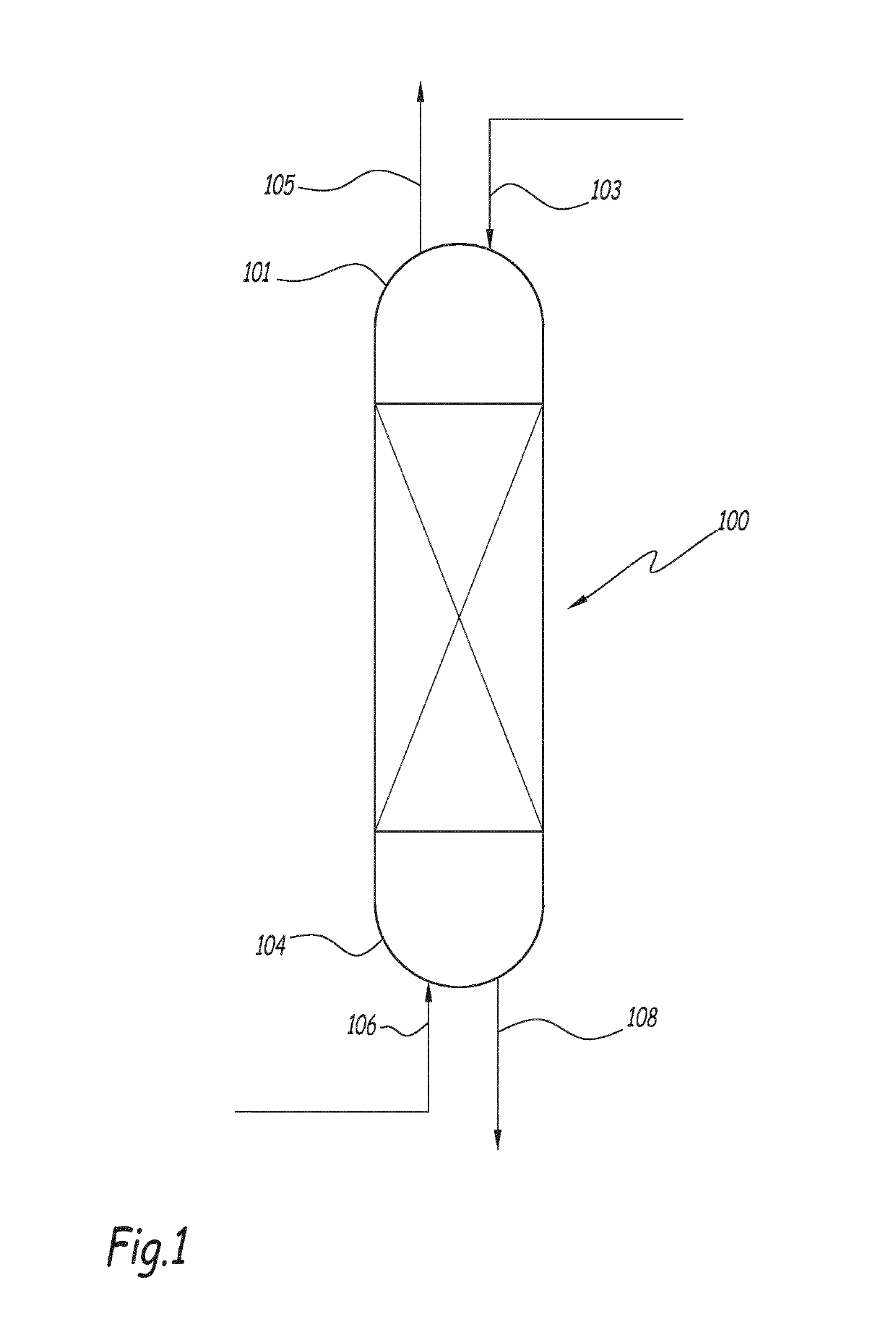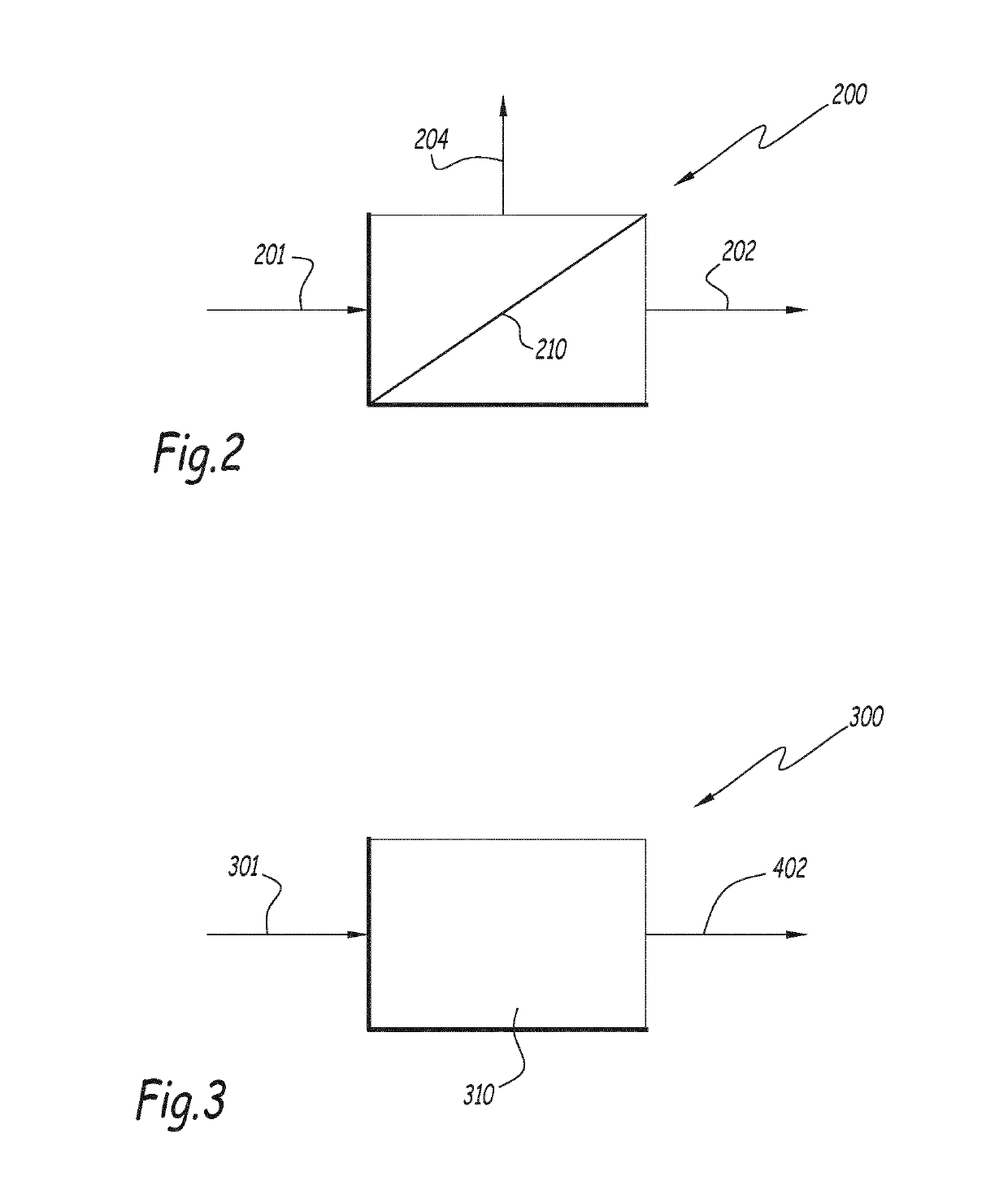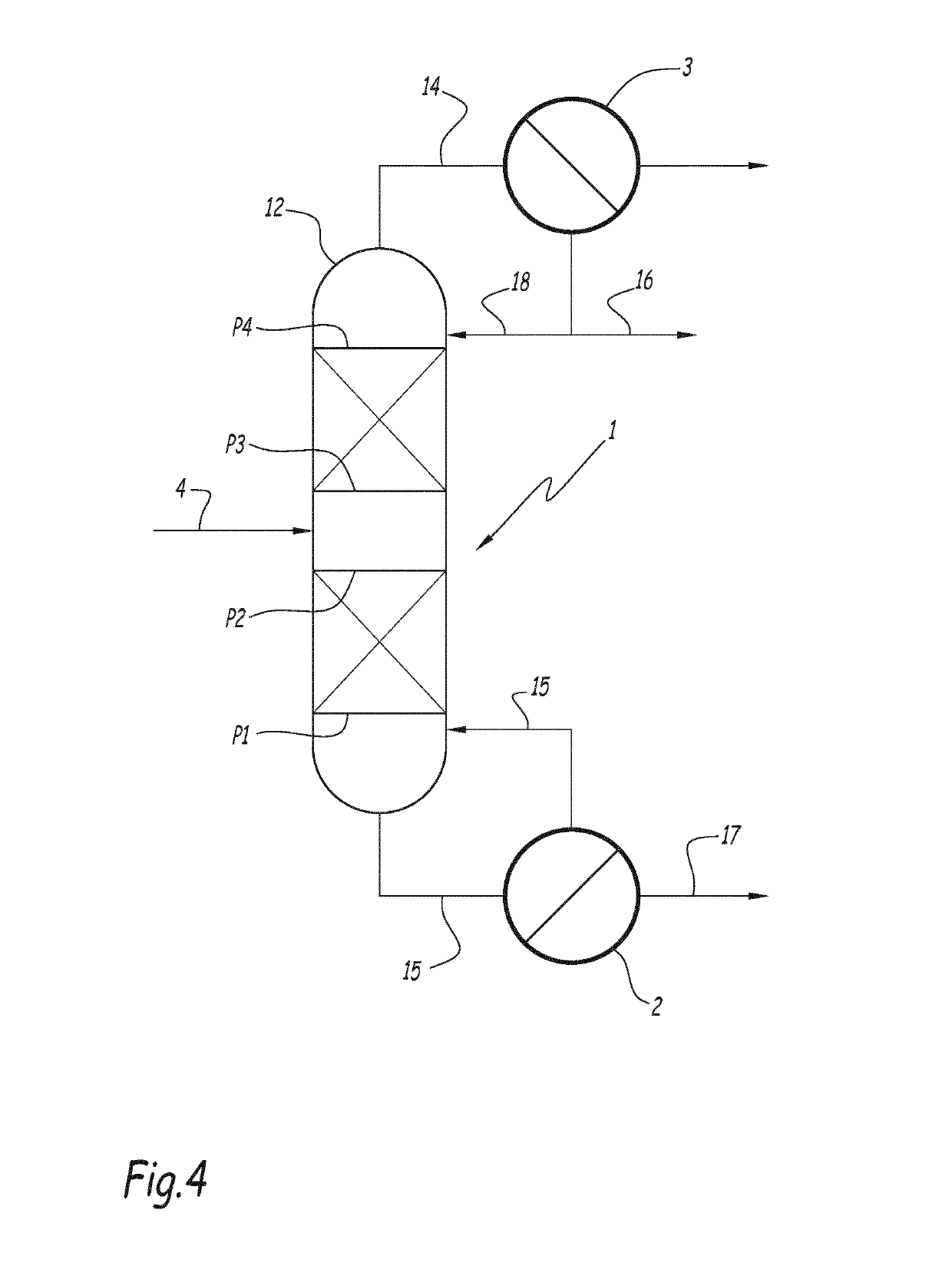Method for producing xylylene diisocyanate (XDI)
a technology of xylylene diisocyanate and diisocyanate, which is applied in the direction of isocyanic acid derivative purification/separation, separation process, evaporator regulation/control, etc., can solve the problems of limited useful life, slow type of process, hydrochlorination step, etc., to improve thermal stability of different media, increase the yield of total xdi, and favor the behavior of different equipmen
- Summary
- Abstract
- Description
- Claims
- Application Information
AI Technical Summary
Benefits of technology
Problems solved by technology
Method used
Image
Examples
example 1
[0100]In a 1L glass reactor are loaded: 351.9 g of orthodichlorobenzene and 87.4 g of crude mXDI obtained from the phosgenation of mXDA and its dephosgenation. The mixture is stirred at 300 rpm (stirring which consists of four inclined blades and baffles) and heated to 150° C. under atmospheric pressure for 5 hours under argon stripping.
[0101]The crude mXDI before step b) has the following composition by weight: 1.7% CIBi, 65% mXDI, 2% mXDI dimer, 6.7% mXDI allophanoyl chloride, 24.6% XDI-based heavy products (QSF 100).
[0102]The end product after step b) has the following composition by weight: 2.6% CIBi, 74.5% mXDI, 1.5% mXDI dimer, 0% mXDI allophanoyl chloride, 21.4% heavy products (QSF 100).
[0103]Percentage increase of mXDI following step b): ((% mXDI) after step b)t−(% mXDI) before step b)) / (% mXDI) before step b)=+14.6%
example 2
[0104]In a 1L glass reactor are loaded: 328.8 g of orthodichlorobenzene and 82.2 g of crude mXDI obtained from the phosgenation of mXDA and its dephosgenation. The mixture is then stirred at 300 rpm (stirring which consists of four inclined blades and baffles) and heated to 150° C. under atmospheric pressure for 5.5 hours under argon stripping.
[0105]The crude mXDI before step b) has the following composition by weight: 1.[sic]% CIBi, 68.2% mXDI, 1.5% mXDI dimer, 5.9% mXDI allophanoyl chloride, 23% heavy products (QSF 100).
[0106]The end product after step b) has the following composition by weight: 2.2% CIBi, 77.1% mXDI, 1.6% mXDI dimer, 1.3% mXDI allophanoyl chloride, 17.8% heavy products (QSF 100).
[0107]Percentage increase of mXDI following step b): ((% mXDI) after step b)−(% mXDI) before step b)) / (% mXDI) before step b)=+13.0%
example 3
[0108]In a 1L glass reactor are loaded: 603.4 g of orthodichlorobenzene and 216.2 g of crude mXDI obtained from the phosgenation of mXDA and its dephosgenation. The mixture is then stirred at 300 rpm (stirring which consists of four inclined blades and baffles) and heated to 130° C. under atmospheric pressure for 5.5 hours under argon stripping.
[0109]The crude mXDI before step b) has the following composition by weight: 1.6% CIBi, 75.7% mXDI, 4% mXDI dimer, 4.7% mXDI allophanoyl chloride, 14% heavy products (QSF 100).
[0110]The end product after step b) has the following composition by weight: 1.7% CIBi, 78.4% mXDI, 5% mXDI dimer, 1.7% mXDI allophanoyl chloride, 13.2% heavy products (QSF 100).
[0111]Percentage increase of mXDI following step b): ((% mXDI) after step b)−(% mXDI) before step b)) / (% mXDI) before step b)=+3.6%
PUM
| Property | Measurement | Unit |
|---|---|---|
| Temperature | aaaaa | aaaaa |
| Temperature | aaaaa | aaaaa |
| Temperature | aaaaa | aaaaa |
Abstract
Description
Claims
Application Information
 Login to View More
Login to View More - R&D
- Intellectual Property
- Life Sciences
- Materials
- Tech Scout
- Unparalleled Data Quality
- Higher Quality Content
- 60% Fewer Hallucinations
Browse by: Latest US Patents, China's latest patents, Technical Efficacy Thesaurus, Application Domain, Technology Topic, Popular Technical Reports.
© 2025 PatSnap. All rights reserved.Legal|Privacy policy|Modern Slavery Act Transparency Statement|Sitemap|About US| Contact US: help@patsnap.com



